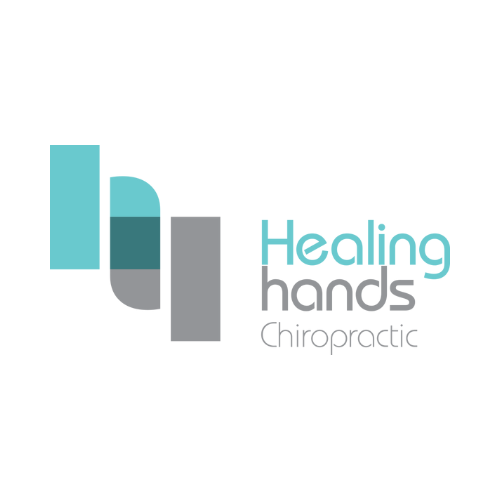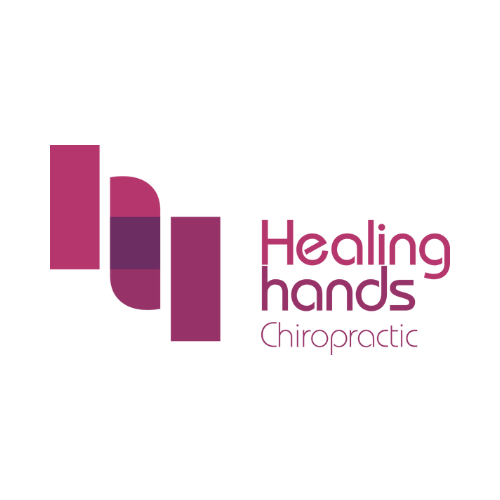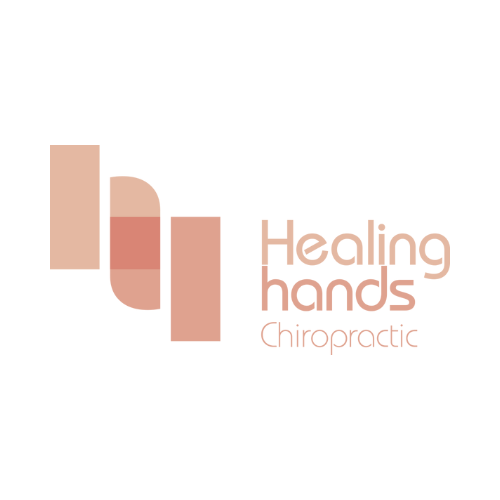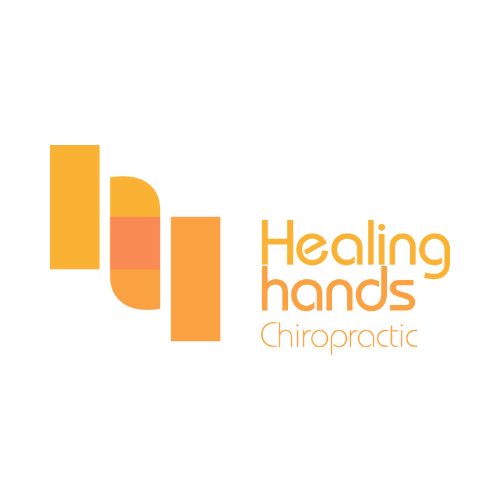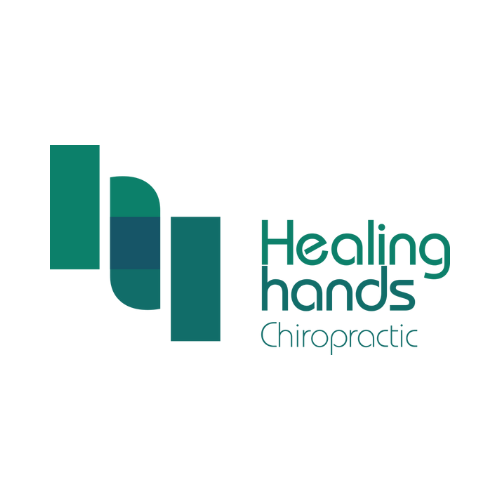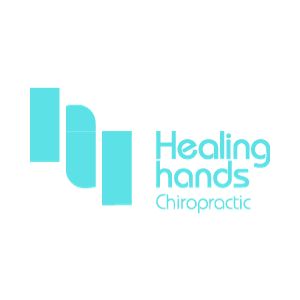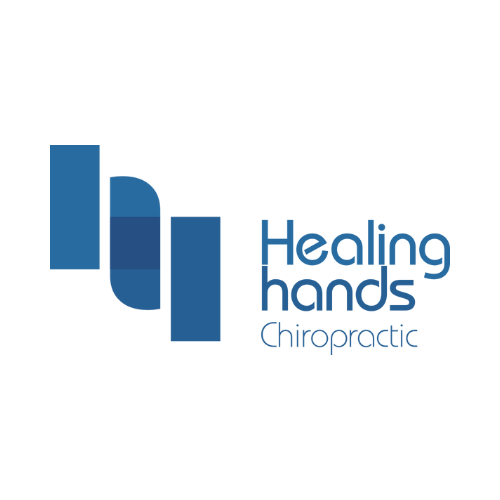Lower Back Pain Treatment
What is lower back pain?
Lower Back Pain is one of the most common pains we suffer daily. It is typically caused by muscles, ligaments, joints and discs that may be twisted or overly stretched by rapid movement combined with our lifestyle and bad posture. To learn more, we have written a full-length article here.
Chronic back pain can hinder your life in many ways and stop you from participating in the activities you most enjoy. You should seek treatment for lower back pains if the pains cause you to have reduced mobility and functionality. For pain relief and prevention, you should consult a chiropractor specialising in back pain and receive chiropractic treatment for your lower back pain.
At Healing Hands Chiropractic, our team of chiropractors is well-versed in handling lower back pain in Singapore. Through our chiropractic treatment, we get to the root of the issue and handle it with precise non-invasive techniques to help relieve your lower back pain. Healing Hands aim to enable our patients with a better quality of life. If you are looking for a chiropractor for lower back pain and lower back pain treatment in Singapore, consult us to find the best solution for your pain alleviation.
Lower Back Pain Facts!
- According to a study by Edelman Intelligence, Singaporeans spend about $8 billion each year on pain relief treatment.
- An article by Singapore General Hospital also stated that pain dramatically influences a person and affects their moods. Furthermore, it can affect sleep habits and even the quality of sleep, which can get a person on a bad start to their day.
- According to Health Hub Singapore, about 80 percent of adults suffer from lower back pain from time to time.
What are the symptoms of lower back pain?
Lower back pain can manifest in various ways depending on its cause, severity, and the individual’s perception of pain. Here are some common symptoms associated with lower back pain:
Pain: This can range from a dull, aching sensation to a sharp, stabbing pain. It may be constant or intermittent, come on suddenly, or develop gradually.
Muscle Stiffness or Tension: Tightness or spasms in the muscles of the lower back.
Limited Range of Motion: Difficulty moving, bending, or twisting the lower back.
Pain that radiates: Sometimes, the pain might radiate downwards into the buttocks, thighs, or even to the legs and feet. This is commonly associated with conditions like sciatica, where a nerve root in the lower spine is compressed.
Numbness or Tingling: This may be felt in the lower back or in other areas like the buttocks, legs, or feet, especially if nerve involvement is present.
Weakness: Some people experience muscle weakness in the legs or feet due to nerve compression.
Localized Soreness: Upon touch or pressure.
Pain that worsens after prolonged sitting or standing.
Pain that improves with reclining.
In some cases, lower back pain can be associated with more severe symptoms, which may indicate a serious condition. These can include:
- Difficulty urinating or loss of bladder/bowel control.
- Severe, constant pain that doesn’t improve with rest.
- Pain accompanied by unexplained weight loss.
- Fever with the back pain.
- Pain following a traumatic event, such as a fall or accident.
- History of cancer combined with new-onset back pain.
Remember, if you’re experiencing lower back pain, especially if it’s severe, worsening, or accompanied by other symptoms like numbness, weakness, or radiating pain, you should seek medical attention. These could be signs of more serious conditions.
What are the complications from lower back pain?
Lower back pain can lead to a range of complications if not addressed timely or adequately. These complications can affect an individual’s physical, psychological, and social well-being:
Chronic Pain: Acute lower back pain can become chronic if it persists for 12 weeks or more, even after the initial cause of the pain has been treated.
Physical Deconditioning: Prolonged pain may lead to reduced physical activity, resulting in muscle weakness, reduced flexibility, and overall loss of physical fitness.
Functional Impairment: Chronic LBP can hinder a person’s ability to perform everyday activities, such as lifting, bending, and sitting for extended periods.
Neurological Symptoms: Conditions like herniated discs or spinal stenosis can compress nerve roots, leading to symptoms like numbness, tingling, or weakness in the legs, known as radiculopathy.
Mental Health Issues: Persistent pain can lead to psychological distress, including conditions like depression, anxiety, and sleep disturbances. The experience of pain can be influenced by emotional and psychological factors, creating a feedback loop where mental health issues exacerbate pain perception.
Reduced Quality of Life: Pain and functional impairment can reduce an individual’s overall quality of life, affecting personal relationships, recreational activities, and even simple daily tasks.
Economic Impact: LBP is a significant cause of work absenteeism, leading to reduced productivity and increased medical expenses. Individuals might also face direct economic implications due to medical bills and indirect costs from lost wages.
Medication Complications: Prolonged use of certain pain medications, especially opioids, can lead to dependency, tolerance, and potential overdose. Over-reliance on medications can also result in side effects, such as gastrointestinal problems, liver issues, and more.
Complications from Invasive Treatments: Procedures like surgeries carry inherent risks, including infection, nerve damage, and other postoperative complications. Moreover, not all patients achieve complete pain relief after surgery.
Development or Exacerbation of Comorbid Conditions: Chronic pain can lead to or exacerbate other health issues, such as obesity (due to decreased physical activity) or cardiovascular diseases (partly due to stress and depression).
To mitigate these complications, it’s essential to approach lower back pain with a comprehensive treatment plan that may include physical therapy, pain management strategies, behavioural therapies, and lifestyle changes. Always consult with a healthcare professional for a proper diagnosis and treatment recommendations.
The common causes of lower back pain:
Lower back pain is a prevalent condition, and its causes are multifactorial. Some of the common causes include:
- Injury: Acute lower back pain is often caused by a sudden injury to the muscles and ligaments supporting the back. The pain may be caused by muscle spasms or a strain or tear in the muscles and ligaments.
- Overwork: Whether we are doing an operational job or an office job, we are consistently using certain parts of our muscles. Therefore, if the muscle is consistently activated without sufficient rest time for it to recover, we will start to feel weakness in our back and pain towards the end. It is usually a long time before the pain even become noticeable.
- Poor Posture: Harmful, prolonged posture creates extra stress on our spine & muscle. It causes the muscles and joints to break down as they are forced to stay in an incorrect position (overwork). When left untreated, the body will continue to be stuck in this poor posture and often, with time, it leads to humpback and tilting in the body.
- Inactivity: Prolonged inactivity might increase back pain as the back becomes weak, stiff, and deconditioned. As the pain increases, our fitness level reduces further which will eventually lead to fatigue, weakness, injury. It may also cause degenerative changes such as osteoporosis, arthritis, premature aging.
Bulging or Ruptured Disks: Disks act as cushions between the individual bones (vertebrae) in the spine. If a disk bulges or ruptures, it can press on a nerve, causing pain.
Degenerative Disc Disease: Over time, the intervertebral discs can wear out or degenerate, reducing their ability to cushion the vertebrae and potentially leading to pain.
Arthritis: Osteoarthritis can impact the lower back. In some cases, arthritis in the spine can lead to a narrowing of the space around the spinal cord, a condition called spinal stenosis.
Skeletal Irregularities: A condition in which your spine curves to the side, such as scoliosis, can lead to back pain, though it often doesn’t cause pain until middle age.
Osteoporosis: If the bones become porous and brittle, the vertebrae can develop compression fractures.
External factors, such as the type of job, lifestyle choices (like smoking), and body weight, can also influence the risk of developing lower back pain. If someone is experiencing back pain, it’s crucial to consult with a healthcare professional for a proper diagnosis and treatment approach.
Do i need to see a doctor for lower back pain? When should I see a doctor?
While occasional lower back pain due to minor strains or overexertion is common and often resolves on its own, there are specific symptoms and situations when seeing a doctor is advisable. Here are instances when you should seek medical attention for lower back pain:
Duration: If the pain persists for more than a few weeks without improvement despite home care measures like rest, ice, and over-the-counter pain relievers.
Intensity: If the pain is severe or doesn’t improve with rest.
Radiating Pain: Pain that radiates down one or both legs, especially if the pain extends below the knee. This can be indicative of sciatica, which is caused by compression of the sciatic nerve.
Weakness, Numbness, or Tingling: If you experience weakness, numbness, or tingling in one or both legs.
Unintentional Weight Loss: Unexpected weight loss accompanied by back pain can be a sign of a more serious underlying condition.
Associated Symptoms: If you have back pain along with a fever, which might indicate an infection.
Bladder or Bowel Issues: Difficulty controlling bladder or bowel function can be a sign of a condition known as cauda equina syndrome, which is a serious condition that requires immediate attention.
History of Trauma: If you’ve recently been in an accident or suffered a fall and subsequently experience back pain.
If you’re unsure about the severity or nature of your lower back pain, it’s always better to err on the side of caution and consult with a healthcare professional. They can provide guidance on treatment, determine the underlying cause, and advise on any necessary diagnostic tests.
How to relieve lower back pain at home?
Dive in to explore easy-to-follow, home-based solutions that aim to restore your mobility and enhance your quality of life. In our guide, we’ve gathered some simple, yet effective, home remedies to help soothe that pesky lower back pain.
- Rest: Avoid working too hard, too long and if we really need to, take breaks in-between work. Make sure to eat healthy food to refuel the right nutrients to the body. Most importantly, get proper sleep for recharging.
- Exercise: We should avoid sedentary habits. Regular exercise to maintain fitness using a combine different type of exercises such as weights, cardio, and stretching.
- Posture: Making sure the work station is ergonomically friendly maintaining the straight and neutral posture. Adjust places you spend most of your time in order to support the neutral position such as work station, desk, car seat, and bed.
- Mindfulness: Deep breathing exercises, meditation, and progressive muscle relaxation can help in easing the tension that exacerbates pain.
- Wear comfortable shoes: Shoes with high heels can strain the lower back. Opt for shoes that offer proper support.
- Weight management: Being overweight puts extra strain on the back muscles. Maintaining a healthy weight can prevent many cases of lower back pain.
Remember, it’s crucial to identify the cause of your lower back pain to tailor your treatment effectively. If the pain persists or is severe, always consult a healthcare professional to ensure you’re addressing the root of the problem.
What are the treatments for lower back pain?
The treatment for lower back pain largely depends on the underlying cause and the severity of the pain. A combination of self-care measures, medications, physical therapies, and occasionally more invasive procedures can be used. Here are some commonly recommended treatments for lower back pain:
- Chiropractic care: Manipulation of the spine can be helpful for some people with lower back pain.
Rest and Activity Modification: For acute pain caused by muscle strain, a short period of rest can help. However, prolonged bed rest is generally discouraged. Gradually returning to normal activities while avoiding heavy lifting and twisting can aid recovery.
Physical Therapy: A physical therapist can provide exercises and stretches to improve flexibility, strength, and posture. They can also teach you proper body mechanics to prevent future injuries.
Pain Medications: Over-the-counter pain relievers like ibuprofen or acetaminophen can help manage mild to moderate pain. Stronger prescription medications may be prescribed for more severe pain.
Hot and Cold Therapy: Applying heat or cold packs to the affected area can help relieve pain and reduce inflammation.
Injections: Corticosteroid injections can be administered directly into the affected area to reduce inflammation and provide temporary pain relief. These are often used for more severe cases or when conservative treatments don’t work.
Alternative Therapies: Some people find relief through therapies like acupuncture, chiropractic care, or massage.
Exercise: Engaging in regular low-impact aerobic exercises and strength training can help strengthen the muscles supporting the spine and improve overall back health.
It’s important to note that treatment plans should be tailored to each individual’s specific condition and needs. Consulting a healthcare professional, such as a primary care physician, orthopedic specialist, or pain management specialist, is essential for an accurate diagnosis and appropriate treatment recommendations.
Is chiropractic treatment good for lower back pain? Should i see a chiropractor?
Chiropractic care, rooted in the belief that the body can heal itself when the skeletal system is correctly aligned, has become an increasingly popular option for many individuals. One of the primary techniques used in this field is spinal manipulation, which specifically addresses issues related to the spine. Notably, many patients with lower back pain turn to chiropractors in search of relief. To better understand this choice, we delve deeper into the potential benefits and important considerations surrounding chiropractic care for lower back pain.
Benefits:
Effective Pain Relief: Numerous individuals have reported significant alleviation from lower back pain following chiropractic sessions. Research has indicated that spinal manipulative therapy, the cornerstone of chiropractic care, can be just as effective as other conventional treatments, whether the back pain is acute or chronic in nature.
A Natural Approach: One of the standout features of chiropractic care is its non-reliance on pharmaceutical interventions. This drug-free methodology appeals to those who are wary of the potential side effects of medications or simply prefer natural therapeutic alternatives.
Complementary Care: While some might think that chiropractic care stands apart from other therapeutic modalities, it can effectively complement treatments like physical therapy, massage, or medication, creating a well-rounded approach to managing back pain.
Holistic Perspective: Beyond mere physical adjustments, chiropractors often assess a patient’s overall lifestyle, considering factors like diet, posture, and ergonomics. Such a holistic approach can offer broader insights into the causes of back pain and suggest comprehensive solutions.
Chiropractic care offers a unique approach to managing lower back pain, emphasizing natural healing and overall well-being. However, as with all health decisions, it’s essential to be informed and to ensure that the chosen treatment aligns with one’s specific health condition and comfort level. Consulting with a trustable chiropractor and considering all available options will pave the way for the best possible outcome.
At Healing Hands Chiropractic, we are experienced in chiropractic treatment for lower back pain, discomfort and tension in the problem areas. Our chiropractor will identify the alignment of your spine from head to toe through an x-ray scan. A consultation will then be required to determine if your medical history allows chiropractic adjustments. Afterwards, the chiropractor will make the necessary adjustments to your spine over a few sessions to improve its alignment and teach you some exercises to increase mobility and flexibility in the body while maintaining the effects of the chiropractic adjustments.
Why Choose Us?
Healing Hands Chiropractic has been in the industry for 12 years and has a team of experienced chiropractors dedicated to helping patients with tension relief and management. We are experienced in relieving tensions and are able to help you to manage the pain using holistic and effective means. Healing Hands Chiropractic Singapore is one of the most reviewed and trustable chiropractic clinic. With over 1600+ five star reviews and real before vs after patients photos, you can entrust us with your health!
Get Rid of the pain today
Want To Have a Healthier and Happier life?
Book Your Appointment Today!
What To Expect During Your 1st Visit
Identifying postural imbalances to detect any differences in weight between the right and the left sides of the body, alignment from our head all the way down
to our hips. Tyron thermographic spinal scan helps to measure the muscle temperature around the spine. It detects areas with the greater temperature where muscles are working harder due to poor posture.
1-on-1 consultation with our Chiropractors with a detailed review of your health history.
Our Chiropractor will investigate and educate you on the necessary steps forward in reaching your health goals.
Our Chiropractors will perform a series of range of motion tests to determine your current body condition and an adjustment will be administered if deemed
clinically safe to do so.
Our Chiropractors will use their hands or a small instrument to apply a controlled force to the spinal joints. “Crack” or “Pop” sound may occur as your spine gets manipulated. Do not be alarmed, as the adjustment releases trapped gasses from your joints.
X-Rays will be prescribed so that we can accurately diagnose your condition before prescribing a customized treatment program. It is also for your safety and for us to rule out any possible underlying conditions that cannot be treated by Chiropractic.
The review of your X-rays is complimentary at your following visit if you take up the X-rays with our preferred diagnostic partners.
Frequently Asked Questions
A chiropractor provides non-invasive treatments with the benefits of spinal adjustments and realigning the joints to improve the system and function throughout the body.
In general, chiropractors believe in the ability of the body to self-heal through Chiropractic adjustment with the help of modalities such as the Flexion distraction table, E-stim, Denneroll, and functional exercises. They also utilize various other treatment modalities such as ultrasound, bodywork, etc. to get patients back to health.
We recommend seeing one if you are experiencing any discomfort, pains or aches in your muscles or joints. Check out the list of conditions we treat here.
Most importantly, do not wait until you are experiencing pain or worse, numbness to see a chiropractor. Often, pain is the last thing that shows up but the first to go away after chiropractic treatment.
There is no better time to visit the highest rated chiropractor in Singapore. Book your appointment here.
Chiropractic adjustment should not be painful. However, in some instances when the injury is either acute (happened recently) or sub-acute(on the road to recovery), the muscles and ligaments may prove to be guarded or sensitive to the touch, these are some exceptions.
A thorough examination of your complaints and conditions can alleviate any concerns that you may have.
It is a very safe & accurate thermographic scanner that scans the full spine or segmental parts of the spine in approximately 15 seconds. The Tytron detects areas of asymmetry as well as indicate areas with greater temperature due to acute soft tissue damage.
The Tytron scanner uses precision sensors, speciality lenses and a unique focusing system to give the chiropractor the most accurate and repeatable information available. You will be given a print out of your result on the first visit.
Book your first appointment with us to experience the Healing Hands chiropractic journey.
X-rays are recommended if you want to take care of your condition holistically and to get to the root of the issues. It is also for the patients safety and for us to rule out any possible underlying conditions that cannot be treated by Chiropractic adjustment. Just like your regular health check up, X-rays serve to give you and the chiropractor an insight to your spinal health as our naked eyes can only tell a rough story.
Our Chiropractors will use their hands or a small instrument to apply a controlled force to the spinal joints.
A “Crack” or “Pop” sound may occur as your spine gets manipulated. Do not be alarmed, as the adjustment releases trapped gasses from your joints.
Yes, we have both Male and Female Chiropractors at Healing Hands Chiropractic Singapore.
Our Female Chiropractors are stationed at Healing Hands Ang Mo Kio.and Healing Hands Bedok
All our Chiropractors believe in personalised care supported by time-tested techniques enhanced with the most efficient time frame. All our Chiropractors embody our 3 core values; Care For Patient, Integrity and Attention to Detail.
Yes, neck adjustments are a very safe treatment when performed by chiropractors as they are trained in the correct techniques to manipulate the joints safely. Healing Hands chiropractors also ensure that it is clinically safe enough for the adjustment before they perform it. This is also one of the reason why X-rays are required before more customised treatment can be done to ensure that your body is able to receive it.
The benefits of getting chiropractic treatment helps with reducing pain and increase joint mobility. We’ve written an article all about it here.
There also seems to be a lot of concern about the safety of getting adjusted by a chiropractor. However, when done by a professional chiropractor, spinal manipulation and Chiropractic care are generally considered safe, and effective treatments for acute pain.
Healing Hands Chiropractic Singapore has been treating thousands of patients since 2010 and many have benefited from it.
We hope to tell people more about chiropractic so that more can come to understand and appreciate how chiropractors can help with the various conditions for the people in Singapore.ut chiropractic so that people can understand and appreciate Chiropractic.
According to MOH, there are currently 150 chiropractors in Singapore. Choosing the most effective chiropractor for you may be challenging.
That is why we have written an article about 5 ways to find a good Chiropractor. In short,
1) Know your own health goals.
2) Integrity and confidence of the Chiropractor.
3) Word of mouth or reviews about the Chiropractor.
4) Clinical competency and experience of the Chiropractors.
5) The willingness of the Chiropractor to refer out.

